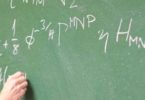This Maharashtra CET Mathematics Practice sample paper is based on Mah CET Maths syllabus.
Ques: If cosh y = sec x, then the value of tanh2 (y/2) is
(a) tan2 (x/2)
(b) cot2 x/2
(c) sin2 (x/2)
(d) cos2 x/2
Ques. The triangle formed by the tangent to the curve f(x) = x2 + bx – b at the point (1, 1) and the co-ordinate axes, lies in the first quadrant. If its area is 2 then the value of b is
(a) –1
(b) 3
(c) –3
(d) 1
Ques: The number of values of c such that the straight line y = 4x + c touches the curve x2/4 + y2 = 1 is
(a) 0
(b) 1
(c) 2
(d) Infinite
Ques: The vector b = 3j + 4k is to be written as the sum of a vector b1 parallel to a = I + j and a vector b2 perpendicular to a. Then b1 =
(a) 3/2 (i + j)
(b) 2/3 (I + j)
(c) ½ (I + j)
(d) 1/3 (i + j)
Related: biomolecules questions
Ques: The number of reflexive relations of a set with four elements is equal to
(a) 216
(b) 212
(c) 28
(d) 24
Ques. The solution of the differential equation sec2 x tan ydx + sec2 y tan xdy = 0 is
(a) tan x = c tan y
(b) tan x = c tan (x + y)
(c) tan x = c cot y
(d) tan x sec y = c
Ques. If (1 + x – 2x2)6 = 1 + a1x + a2x2 + a3x3 . . . . . then the value of a2 + a4 + a6 + . . . .+ a12 will be
(a) 32
(b) 31
(c) 64
(d) 1024
Ques. If f’(x) = g(x) and g’(x) = –f(x) for all x and f(2) = 4 = f’(2), then f2 (24) + g2 (24) is
(a) 32
(b) 24
(c) 64
(d) 48
Ques. If nP3 + nCn–2 = 14n, then n =
(a) 5
(b) 6
(c) 8
(d) 10
Related: newtons laws questions
Ques: The triangle formed by the tangent to the curve f(x) = x2 + bx – b at the point (1, 1) and the co-ordinate axes, lies in the first quadrant. If its area is 2 then the value of b is
(a) –1
(b) 3
(c) –3
(d) 1
49n + 16n – 1 is divisible by
(a) 3
(b) 19
(c) 64
(d) 29
Two tangents PQ and PR drawn to the circle x2 + y2 – 2x – 4y – 20 = 0 from point P (16, 7). If the centre of the circle is C, then the area of quadrilateral PQCR will be
(a) 75 sq. units
(b) 150 sq. units
(c) 15 sq. units
The point (4, -3) with respect to the ellipse 4x2 + 5y2 = 1 is
(a) lies on the curve
(b) is inside the curve
(c) is outside the curve
(d) is focus of the curve
The area of the triangle formed by the line 4x2 – 9xy – 9y2 = 0 and x = 2 is
(a) 2
(b) 3
(c) 10/3
(d) 20/3
Related: Trigonometry Ratios Practice Questions
Ques: The differential equation for the family of curves x2 + y2 – 2ay = 0, where a is an arbitrary constant, is
(a) (x2 + y2)y’ = 2xy
(b) 2(x2 + y2)y’ = 2xy
(c) (x2 – y2)y’ = 2xy
(d) 2(x2 – y2)y’ = xy
Ques: If one root of the equation f(x) = 0 is near to xo then the first approximation of this root as calculated by Newton-Raphson method is the abscissa of the point where the following straight line intersects the x-axis
(a) Normal to the curve y = f(x) at the point (x0, f(x0))
(b) Tangent to the curve y = f(x) at the point (x0, f(x0))
(c) The straight line through the point (x0, f(x0)) having the gradient 1/f’(x0)
(d) The ordinate through the point (x0, f(x0))
Ques. The coefficient of x4 in the expansion of (1 + x + x2 + x3)11 is
(a) 900
(b) 909
(c) 990
(d) 999
Let PQR be a right angled isosceles triangle, right angled at P(2, 1). If the equation of the line QR is 2x + y = 3, then the equation representing the pair of lines PQ and PR is
(a) 3x2 – 3y2 + 8xy + 20x + 10y + 25 = 0
(b) 3x2 – 3y2 + 8xy – 20x – 10y + 25 = 0
(c) 3x2 – 3y2 + 8xy + 10x + 15y + 20 = 0
(d) 3x2 – 3y2 – 8xy – 10x – 15y – 20 = 0
Let function f (x) = x2 + x + sin x – cos x + log (1 + |x|) be defined over the interval [0, 1]. The odd extensions of f(x) to interval [–1, 1] is
(a) x2 + x + sin x + cos x – log (1 + |x|)
(b) –x2 + x + sin x + cos x – log (1 + |x|)
(c) –x2 + x + sin x – cos x + log (1 + |x|)
Related: Maths quiz with answers
The product of lengths of perpendiculars from any point of the hyperbola x2 – y2 = 8 to its asymptotes is
(a) 2
(b) 3
(c) 4
(d) 8
The roots of the equation 32x – 10.3x + 9 = 0 are
(a) 1, 2
(b) 0, 2
(c) 0, 1
(d) 1, 3
The curve y – exy + x = 0 has a vertical tangent at the point
(a) (1, 1)
(b) at no point
(c) (0, 1)
(d) (1, 0)
If are in A.P. 10ax + 10 , 10bx + 10 , 10cx + 10 are in
(a) A.P.
(b) G.P. when x > 0
(c) G.P. for all x
(d) G.P. when x < 0
If log 2, log (2n – 1) and log (2n + 3) are in A.P., then n =
(a) 5/2
(b) log2 5
(c) log3 5
(d) 3/2
Related: Enzymes quiz
The normal chord of a parabola y2 = 4ax at (x1,x1) subtends a right angle at the
(a) Focus
(b) Vertex
(c) (–a, 0)
The binary equivalent of octal number (5473.64)8 is
(a) (110100111011.110101)2
(b) (101100111011.110100)2
(c) (100100111011.110100)2
(d) (101100111101.110100)2
The area of the triangle formed by the line x + y = 3 and the angle bisectors of the pair of straight lines x2 – y2 + 2y = 1 is
(a) 2
(b) 4
(c) 6
(d) 8
If iz3 + z2 – z + i = 0 then the value of |z| is
(a) 1
(b) 2
(c) < 1
(d) > 1
Related: Physics quiz questions
Ranks of 10 students of a class in two subjects are (1, 10), (2, 9), (3, 8), (4, 7), (5, 6), (6, 5), (7, 4), (8, 3), (9, 2), (10, 1), then rank correlation coefficient is
(a) 0
(b) – 1
(c) 1
(d) 0.5
A particle is dropped under gravity from rest from a height h(g = 9.8 m/sec2) and then it travels a distance 9h/25 in the last second. The height h is
(a) 100 metre
(b) 122.5 metre
(c) 145 metre
(d) 167.5 metre
The number of distinct terms in the expansion of (x + 2y – 3z + 5w – 7u)n is
(a) n + 1
(b) n+4C4
(c) n+4Cn+2
cot x – tan x =
(a) cot 2x
(b) 2 cot2 x
(c) 2 cot 2x
(d) cot2 2x
The tangents are drawn from the point (4, 5) to the circle x2 + y2 – 4x – 2y – 11 = 0. The area of quadrilateral formed by these tangents and radii, is
(a) 15 sq. units
(b) 75 sq. units
(c) 8 sq. units
(d) 4 sq. units
Related: Mensuration (maths) questions
If the roots of the equations x2 – bx + c = 0 and x2 – cx + b = 0 differ by the same quantity, then b + c is equal to
(a) 4
(b) 1
(c) 0
(d) –4
The coefficient of x5 in the expansion of (1 + x2)5 (1 + x)4 is
(a) 30
(b) 60
(c) 40
If the angles A, B, C are the solutions of the equation tan3 x –3k tan2 x –3 tan x + k = 0 then the triangle ABC is
(a) isosceles
(b) equilateral
(c) acute angled
(d) such a triangle does not exist
If the distances of two points P and Q from the focus of a parabola y2 = 4x are 4 and 9 respectively, then the distance of the point of intersection of tangents at P and Q of the parabola from the focus is
(a) 8
(b) 6
(c) 5
(d) 13
A man of mass 80 kg. is travelling in a lift. The reaction between the floor of the lift and the man when the lift is ascending upwards at 4 m/sec2 is
(a) 1464.8 N
(b) 1784.8 N
(c) 1959.8 N
(d) 1104.8 N
Related: Electrostatics conceptual questions
The value of sin2 5o + sin2 10o + sin2 15o + … + sin2 85o + sin2 90o is equal to
(a) 7
(b) 8
(c) 9
(d) 9 ½
The co-ordinates of the point from where the tangents are drawn to the circles x2 + y2 = 1, x2 + y2 + 8x + 15 = 0 and x2 + y2 + 10y + 24 = 0 are of same length, are
(a) (2, 5/2)
(b) (–2, –5/2)
(c) (–2, 5/2)
(d) (2, –5/2)
If a1, a2, a3, ….. an are n distinct odd natural numbers not divisible by any prime greater than or equal to 7, then the value of 1/a1 + 1/a2 + … + 1/an is always less than
(a) 1
(b) 15/8
(c) ½
(d) ¾
Two trains A and B, 100 kms apart, are travelling to each other with starting speed of 50 km/hr for both. The train A is accelerating at 18 km/hr2 and B is decelerating at 18 m/h2. The distance where the engines cross each other from the initial position of A is
(a) 50 kms
(b) 68 kms
(c) 32 kms
(d) 59 kms
If 2z1 – 3z2 + z3 = 0 then z1, z2, z3 are represented by
(a) three vertices of a triangle
(b) three collinear points
(c) three vertices of a rhombus
Related: chemistry organic compounds containing halogens
The sums of n terms of three A.P.’s whose first term is 1 and common differences are 1, 2, 3 are s1, S2, S3 respectively. The true relation is
(a) S1 + S3 = S2
(b) S1 + S3 = 2S2
(c) S1 + S2 = 2S3
(d) S1 + S2 = S3
The circle x2 + y2 –2x –6y + 2 = 0 intersects the parabola y2 = 8x orthoganally at the point P. The equation of the tangents to the parabola at P can be
(a) x –y –4 = 0
(b) 2x + y –2 = 0
(c) x + y –4 = 0
(d) 2x –y +1 = 0
The equation of the common tangent to the curves y2 = 8x and xy = –1 is
(a) 3y = 9x + 2
(b) y = 2x + 1
(c) 2y = x + 8
(d) y = x + 2
If a > b > c and the system of equations ax + by + cz = 0, bx + cy + az = 0 and cx + ay + bz = 0 has a non trivial solution, then both the roots of the quadratic equation at2 + bt + c = 0 are
(a) at least one positive root
(b) opposite in sign
(c) positive
(d) imaginary
Ques. A man in a balloon, rising vertically with an acceleration of 4.9 m/sec2 releases a ball 2 seconds after the balloon is let go from the ground. The greatest height above the ground reached by the ball is
(a) 14.7 m
(b) 19.6 m
(c) 9.8 m
(d) 24.5 m
Related: mcq on Current Electricity
The figure formed by the lines x2 + 4xy + y2 = 0 and x – y = 4, is
(a) A right angled triangle
(b) An isosceles triangle
(c) An equilateral triangle
Equation of the straight line, passing through the point (3, 4) and farthest from the circle
x2 + y2 + 8x + 6y + 16 = 0, is
(a) x – y + 1 = 0
(b) 3x + 4y = 25
(c) x + y – 7 = 0
Ques. Let ABC be a triangle and O be its orthocentre. If R and R1 are the circum radii of triangles ABC and AOB, then
(a) R1 > R
(b) R1 = R
(c) R1 < R
(d) nothing can be said
Ques. The root of the equation x3 + x – 3 = 0 lies in interval (1, 2) after second iteration by false position method, it will be in
(a) (1.178, 2.00)
(b) (1.25, 1.75)
(c) (1.125, 1.375)
(d) (1.875, 2.00)
Ques. The number of solution of the following equations x2 – x3 = 1, –x1 + 2x3 = –2, x1 – 2x2 = 3 is
(a) Zero
(b) One
(c) Two
(d) Infinite
Related: Optics (Physics) Sample Paper
If 56Pr+6 : 54Pr+3 = 30800 : 1, then r =
(a) 31
(b) 41
(c) 51
The resultant of two forces P and Q is R. If Q is doubled, R is doubled and if Q is reversed, R is again doubled. If the ratio P2 : Q2 : R2 = 2 : 3 : x, then x is equal to
(a) 5
(b) 4
(c) 3
(d) 2
If x = log3 5, y = log17 25, which one of the following is correct
(a) x < y
(b) x = y
(c) x > y
The equation of the parabola whose focus is the point (0, 0) and the tangent at the vertex is x – y + 1 = 0 is
(a) x2 + y2 – 2xy – 4x + 4y – 4 = 0
(b) x2 + y2 – 2xy + 4x – 4y – 4 = 0
(c) x2 + y2 + 2xy – 4x + 4y – 4 = 0
(d) x2 + y2 + 2xy – 4x + 4y + 4 = 0
A root of the equation x3 – 3x – 5 = 0 lies between 2 and 2.5. Its approximate value, by applying bisection method 3 times is
(a) 2.0625
(b) 2.3125
(c) 2.3725
(d) 2.4225
Given that the equation z2 + (p + iq)z + r + I s = 0, where p, q, r, s are real and non-zero has a real root, then
(a) pqr = r2 + p2 s
(b) prs = q2 + r2 p
(c) qrs = p2 + s2 p
(d) pqs = s2 + q2 r
Related: Concept of Chemical Periodicity Question Bank
If the product of roots of the equation x2 – 3kx + 2e2 log k – 1 = 0 is 7, then its roots will real when
(a) k = 1
(b) k = 2
(c) k = 3
If cos (u + iv) = x + iy, then x2 + y2 + 1 is equal to
(a) cos2 u + sinh2 v
(b) sin2 u + cosh2 v
(c) cos2 u + cosh2 v
(d) sin2 u + sinh2 v







Good
please upload other subjects sample papers also